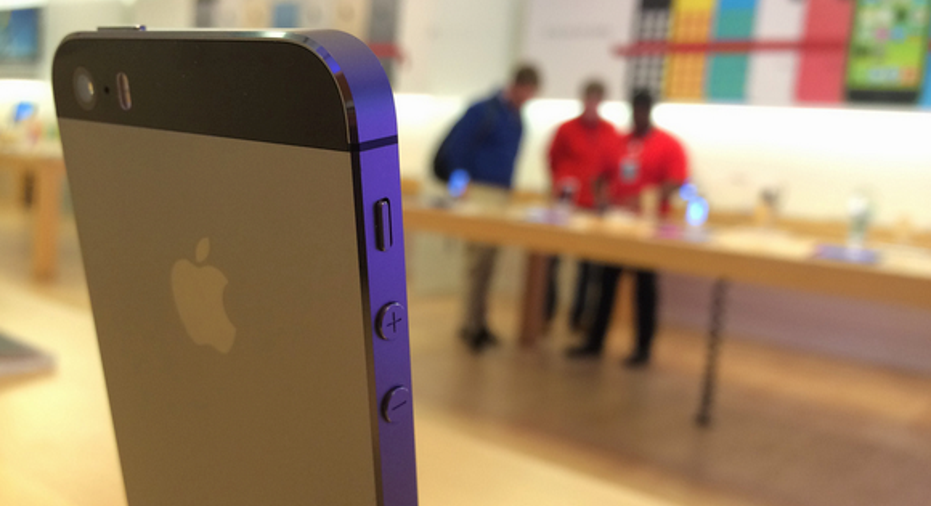Will iPhone 7 Help Apple, Inc.'s Gross Profit Margin?

If speculation about Apple's (NASDAQ: AAPL) iPhone 7 is at least somewhat accurate, it will keep the same overall form factor as the last two flagship iPhones, the iPhone 6s and 6. While another year of the same form factor for the iPhone 6 may be disappointing to some investors, there may be an overlooked benefit to maintaining this design one more year: It could keep iPhone costs lower, helping Apple's gross profit margin.
iPhone 6. Apple's iPhone 7 and 7 Plus is expected to keep the 2014-introduced iPhone 6 and 6 Plus form factor. Image source: Apple.
Form factor-driven costsHow might keeping the iPhone 6 form factor around another year help Apple's gross profit margin? A brief look at Apple's gross profit margin history when the company launched its iPhone 5 provides some clues.
Apple investors following the tech giant closely when the company launched iPhone 5 in 2012 may recall discussions of costs driven by new form factors in earnings calls following the iPhone 5's launch. The iPhone 5's new form factor simply cost more to manufacturer than its predecessor. The higher cost was driven by a significantly different form factor than the iPhone 4s that came before it. Notably, the iPhone 5 display size jumped from 3.5 inches to 4 and included a Retina display with more pixels. In addition, the iPhone 5 body adopted an anodized aluminum back and diamond-cut chamfered edges.
Higher costs for the iPhone 5, of course, ended up negatively affecting Apple's gross profit.
iPhone 5. Image source: The Motley Fool.
Apple's CFO at the time of the iPhone 5 launch, Peter Oppenheimer, explained in the company's fiscal 2012 fourth-quarter earnings call how new products -- particularly those with new form factors -- start out production with heightened cost curves and ultimately mean a narrower profit margin:
Sure enough, Apple's gross profit margin in the quarter following this discussion was 38.6% -- down significantly from its gross profit margin of 44.7% in the year-ago quarter. The negative impact radically redesigned products were having on Apple's business was unmistakable.
A potential tailwind
With these lessons in mind, there's a possibility Apple could benefit from the opposite scenario, in which its product form factors are generally remaining the same for a longer-than-usual timeframe. In other words, keeping the iPhone 6 form factor for yet another year could potentially mean Apple's margin on the device will compare favorably than the margin on its flagship iPhone in the year-ago quarter.
While further per-unit iPhone cost reductions could be minor since Apple may have realized the bulk of them during the form factor's second year, iPhone 5 gross margin history suggests a margin tailwind is likely if the iPhone 7 truly keeps the iPhone 6s form factor. And even if per unit iPhone cost can't be improved any further, keeping the same form factor at least means Apple can "milk" a 2014-introduced iPhone design for another year before the device's cost curve jumps again when the form factor finally gets overhauled.
Of course, this all assumes the iPhone 7 announced on Wednesday really does generally keep the same form factor as iPhone 6 and 6s.
A secret billion-dollar stock opportunity The world's biggest tech company forgot to show you something, but a few Wall Street analysts and the Fool didn't miss a beat: There's a small company that's powering their brand-new gadgets and the coming revolution in technology. And we think its stock price has nearly unlimited room to run for early in-the-know investors! To be one of them, just click here.
Daniel Sparks owns shares of Apple. The Motley Fool owns shares of and recommends Apple. The Motley Fool has the following options: long January 2018 $90 calls on Apple and short January 2018 $95 calls on Apple. Try any of our Foolish newsletter services free for 30 days. We Fools may not all hold the same opinions, but we all believe that considering a diverse range of insights makes us better investors. The Motley Fool has a disclosure policy.